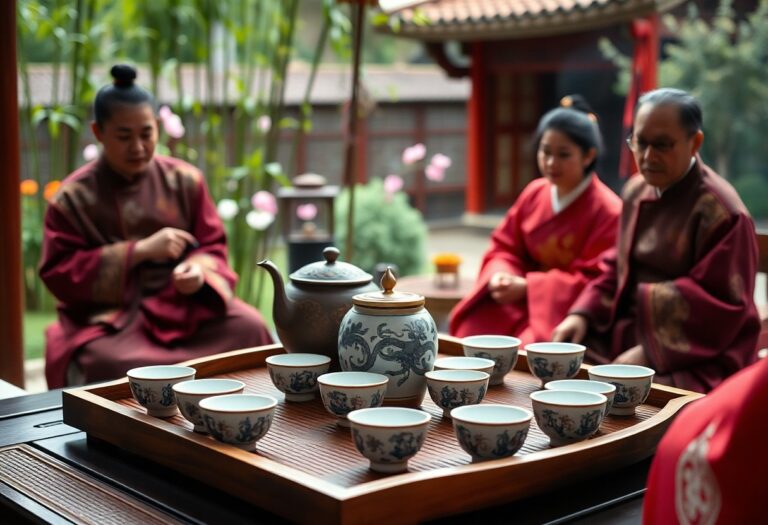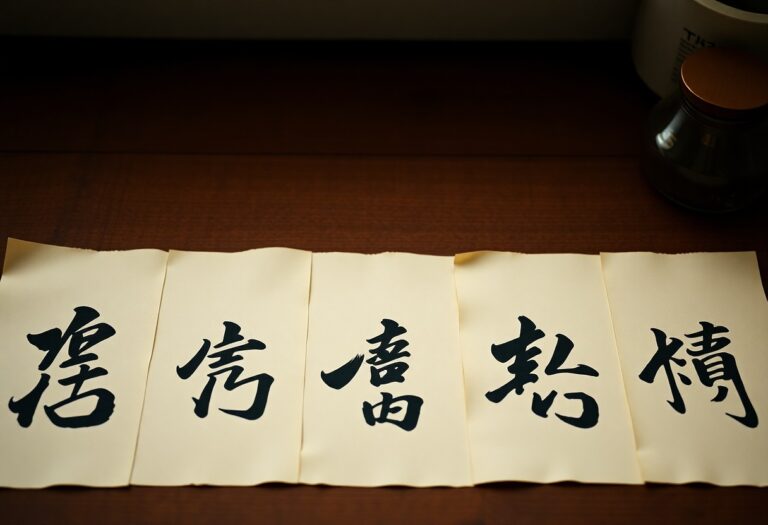Symbolism of the lotus flower is rich and profound, often representing purity, enlightenment, and rebirth across various cultures. As you explore the artistic representations of this remarkable bloom, you'll discover how it captivates with its ability to rise beautifully from murky waters, inspiring countless artists throughout history. This blog post will guide you through eight inspiring examples of lotus flower symbolism in art, enhancing your understanding of its significance and the messages woven into these masterpieces.
Key Takeaways:
- Symbol of Purity: The lotus flower represents purity and spiritual enlightenment in various cultures, often emerging pristine from muddy waters.
- Growth and Transformation: Through its life cycle, the lotus signifies personal growth and transformation, as it rises from the depths to bloom beautifully above the surface.
- Cultural Significance: In art, the lotus is a prominent symbol in Eastern religions, notably within Hinduism and Buddhism, depicting divine beauty and grace.
- Aesthetic Appeal: The unique structure and vibrant colours of the lotus flower make it a popular subject in various artistic expressions, from painting to sculpture.
- Inspirational Examples: Numerous artists and artworks have drawn inspiration from lotus symbolism, showcasing its importance across different periods and styles in art history.

Historical Context of Lotus Flower Symbolism
To understand the significance of lotus flower symbolism, it is imperative to explore its rich historical context. This exquisite flower has transcended time and cultures, representing various ideals such as purity, rebirth, and enlightenment. Its presence in art allows you to appreciate the depth of meaning it has conveyed throughout history, from ancient civilisations to religious practices.
Ancient Civilizations and the Lotus
Civilisations such as the Egyptians and Indians revered the lotus for its striking beauty and profound symbolism. In Egypt, the lotus was associated with the sun god Ra, signifying creation and renewal, while in Indian culture, it embodies spiritual awakening and the divine. As you investigate into their art, you will notice how this flower continues to influence themes related to life and divinity.
Lotus in Religious Art
Around the world, the lotus features prominently in various religious artworks, particularly in Buddhism and Hinduism. Its ability to rise from muddy waters and bloom into a pristine flower makes it a symbol of spiritual enlightenment and purity. You may notice that its representation often accompanies deities or is depicted in sacred texts, serving as a reminder of the transcendent journey from darkness to light.
Flower motifs in religious art are particularly significant, as they convey a deeper spiritual message. In Buddhist iconography, the lotus represents the path to nirvana, while in Hindu art, it often signifies the divine feminine. By engaging with these symbols, you gain insight into the rich tapestry of your cultural heritage and the enduring principles that resonate through centuries, shedding light on the human experience.

Lotus Flower Symbolism in Eastern Art
Assuming you explore into the world of Eastern art, you'll discover that the lotus flower holds profound significance. It is often depicted as a symbol of purity, enlightenment, and rebirth, reflecting the spiritual journey individuals begin upon. In both Buddhist and Hindu traditions, the lotus embodies the potential for growth and transformation, emerging from murky waters to bloom in the sunlight. This beautiful motif serves as a reminder of the beauty that can arise from adversity and the importance of spiritual evolution.
Buddhist Representations
Flower motifs in Buddhist art often showcase the lotus as a vital symbol. It represents the path to enlightenment, illustrating how one can rise above worldly suffering. The lotus flower is associated with several revered figures, including the Buddha, who is frequently depicted seated upon a blooming lotus, signifying purity and spiritual awakening.
Hindu Interpretations
Eastern philosophies also embrace the lotus, particularly within Hinduism, where it symbolises divine beauty and spiritual enlightenment. The lotus is often linked to various deities, such as Lakshmi and Brahma, highlighting its message of prosperity and creation.
Another fascinating aspect of the lotus in Hindu interpretations is its embodiment of divine power and the cycle of life. For instance, the lotus is often depicted as rising from the navel of Lord Vishnu, signifying the universe's origin. You may find that this symbolism extends to the concept of moksha, or liberation, as the lotus reminds you of your potential to transcend limitations and attain spiritual realisation, blossoming into full consciousness.
The Lotus in Western Art
Despite its origins in Eastern traditions, the lotus flower has made significant inroads into Western art, often symbolising purity, enlightenment, and rebirth. For further insights, you can explore The Lotus Flower's Deeper Meaning and Symbolism. You'll often find it featured in paintings, sculptures, and even architecture, encapsulating a deeper sense of beauty and spiritual awakening in Western contexts.
Symbolism in Renaissance Painting
Between the 15th and 17th centuries, the lotus flower emerged in various Renaissance paintings, often embodying themes of divine beauty and transformation. Artists such as Botticelli used the lotus to represent the virginity of Mary, connecting the flower's characteristics with purity and grace.
Contemporary Interpretations
Beside its historical significance, the lotus continues to inspire contemporary artists who integrate its symbolism into modern contexts. The flower often appears in artworks addressing themes of resilience, personal growth, and the beauty that arises from overcoming adversity.
Renaissance artists used the lotus flower not just for its visual appeal, but to convey important messages about virtue and purity. In your exploration of contemporary interpretations, you'll find that this symbolism persists, evolving into representations of inner strength and the ability to rise above challenges. Many modern artists highlight how the lotus can emerge from murky waters, mirroring the human experience of finding beauty and strength within struggles. This enduring symbolism makes the lotus flower a profound and admired subject across various art forms and eras.
Cultural Significance across Different Regions
Keep in mind that the Lotus Flower: Symbolism & Meaning varies significantly across cultures. In many traditions, the lotus flower embodies purity, enlightenment, and rebirth, transcending the physical realm to convey deeper spiritual insights. Its association with water highlights themes of resilience and beauty emerging from adversity, making it a powerful symbol across different societies.
Asian Perspectives
Above all, in Asian cultures, the lotus flower holds profound spiritual significance. In Hinduism, it represents divine beauty and purity, often linked to deities such as Lakshmi and Saraswati. In Buddhism, it signifies spiritual awakening, emerging from murky waters to bloom into enlightenment, showcasing the journey from ignorance to knowledge.
Western Perspectives
Behind the scenes, in Western contexts, the symbolism of the lotus flower is less pronounced but still significant. Often interpreted as a symbol of rebirth and renewal, it is associated with ideas of transformation and personal growth, reflecting a quest for deeper meaning or understanding in life.
This perspective can be seen in various art forms, where the lotus symbolises the journey through challenges. For example, artists may portray the flower blooming amidst chaotic backgrounds, illustrating how beauty and hope can emerge from difficult situations. Additionally, the lotus can represent the potential for personal renewal, reminding you that even in hardship, growth and transformation are possible. This blend of interpretations showcases the lotus as a universal symbol of resilience and inner strength.
Artistic Techniques Highlighting Lotus Symbolism
Your understanding of lotus symbolism in art is profoundly enriched through various artistic techniques. Artists often focus on the intricate details of the lotus flower, capturing its beauty and significance. By employing techniques like layering and texturing, they bring the flower's journey of growth and enlightenment to life. For a deeper exploration, consider reading The Importance of the Lotus Flower in Eastern Philosophy.
Color Usage and Design
Color plays a vital role in expressing the lotus flower's symbolism in art. The varying hues, from deep pinks to soft whites, signify purity and spiritual awakening. Artists intentionally incorporate these colours to evoke emotions and highlight the flower's connection to enlightenment and serenity.
Material and Medium Choices
Usage of different materials and mediums also influences the representation of the lotus flower in art. From traditional ink and watercolour to modern digital media, artists can evoke the delicate essence of the lotus. Each medium brings a unique character to the artwork, emphasising textural qualities and enhancing the flower's symbolic depth.
Considering the variety of materials, you will find that the choice of medium significantly impacts how lotus symbolism is conveyed. For instance, ceramic and bronze sculptures provide a tactile experience, while canvas and digital art highlight vibrant colours and intricate patterns. Each medium can enhance the emotional resonance of the lotus, connecting viewers to its profound meanings of purity and spiritual growth.

Inspiring Examples of Lotus Flower Art
Unlike many symbols, the lotus flower transcends cultures and mediums, leaving a profound impact across various forms of art. From traditional paintings to contemporary installations, the lotus inspires artists to portray themes of purity, rebirth, and enlightenment. These inspiring examples will not only deepen your appreciation of this beautiful flower but will also reveal its enduring significance in the artistic realm.
Traditional Artworks
Across history, traditional artworks featuring the lotus flower have flourished in diverse cultures, symbolising spiritual awakening and divine beauty. In ancient Egyptian papyrus carvings, the lotus represented creation and resurrection, while in Asian art, its depiction often connects to Buddhist principles of enlightenment. These timeless pieces showcase the lotus as a focal point, inviting contemplation and reverence.
Modern Interpretations
The contemporary world sees a fresh wave of artistic interpretations of the lotus flower that reflect today's society. You may notice that modern artists incorporate vibrant colours and abstract forms to explore the flower's significance in areas such as identity and resilience.
Even in today's art scene, the lotus flower retains its vitality and relevance. Artists like Yayoi Kusama use playful polka dots and immersive installations to express themes of self-discovery, while others abstractly convey the flower's journey through adversity to endurance and growth. By engaging with these modern interpretations, you can find your own connection to the lotus, embracing its messages of hope and enlightenment in a fast-paced world.
Conclusion
From above, you can appreciate the profound significance of lotus flower symbolism in art, reflecting themes of purity, rebirth, and enlightenment. By exploring the eight inspiring examples, you gain insight into how this powerful symbol has transcended cultures and epochs, informing your understanding of artistic expression. Incorporating these lessons into your own interpretation of art allows you to engage more deeply with the works that resonate with your personal experiences and beliefs. Ultimately, the lotus flower serves as a reminder of the beauty that can emerge from adversity and the potential for transformation in your own journey.
FAQ
Q: What does the lotus flower symbolise in art?
A: The lotus flower is often seen as a symbol of purity, enlightenment, and rebirth in art. Its ability to bloom beautifully in muddy waters represents resilience and the journey towards spiritual awakening. Various cultures have interpreted the lotus differently, but it commonly embodies the idea of emerging from adversity to achieve greatness.
Q: Can you provide examples of artworks featuring lotus flower symbolism?
A: Yes, several notable artworks incorporate the lotus flower. For instance, in ancient Egyptian art, the lotus often appears in temple reliefs and hieroglyphics, symbolising creation and rebirth. In Asian art, particularly within Buddhist and Hindu traditions, the lotus can be seen in paintings and sculptures of deities, representing divine beauty and spiritual unfolding. Contemporary artists also utilise the lotus in various mediums to convey personal journeys and cultural narratives.
Q: How does the lotus flower symbolism vary across different cultures?
A: The symbolism of the lotus flower varies significantly across cultures. In Egyptian mythology, it is linked to the sun and creation. In Buddhism, the lotus represents purity of the body, speech, and mind, arising from the murky waters of attachment and desire. In Hinduism, the flower is associated with several gods and goddesses, symbolising beauty and prosperity. Each culture incorporates the lotus into its artistic expressions based on its unique beliefs and values.
Q: Why is the lotus flower frequently associated with spiritual growth?
A: The lotus flower's journey from the depths of muddy waters to a pristine bloom above the surface is a powerful metaphor for spiritual growth. It illustrates the idea that individuals can rise above their circumstances, much like the lotus, to achieve personal enlightenment and fulfilment. This symbolism resonates with many artists, who incorporate it into their works to express themes of transformation, hope, and inner strength.
Q: What modern interpretations exist of the lotus flower in contemporary art?
A: In contemporary art, the lotus flower is often reimagined to reflect modern themes such as identity, resilience, and cultural heritage. Artists may use the lotus to challenge societal norms or to represent personal narratives of overcoming struggles. Mixed media and installation art frequently feature the lotus as a central motif, engaging audiences in discussions about the intersection of tradition and modernity as well as personal and collective experiences.















